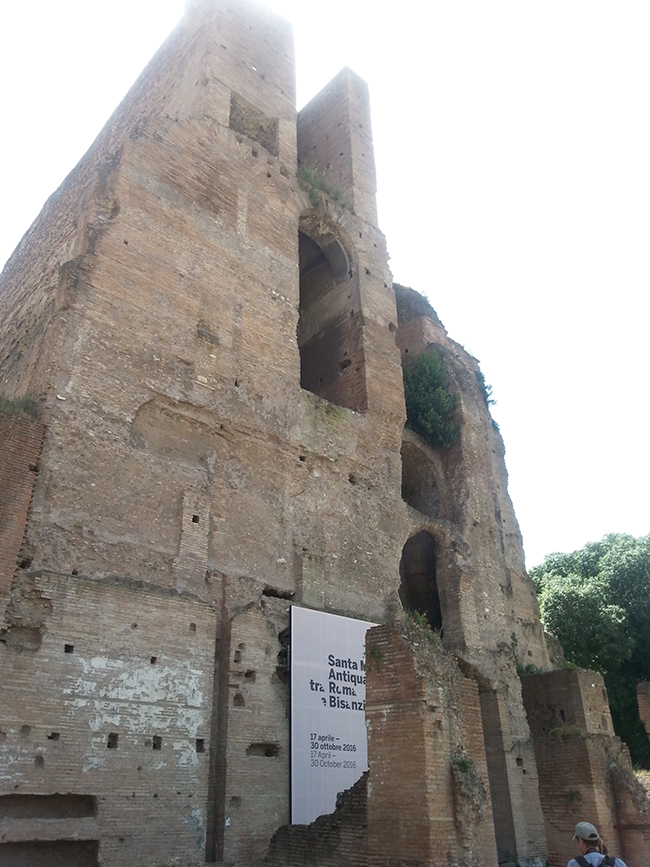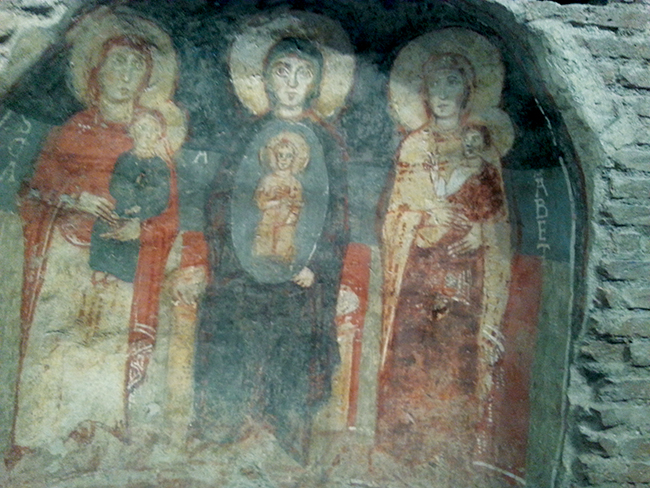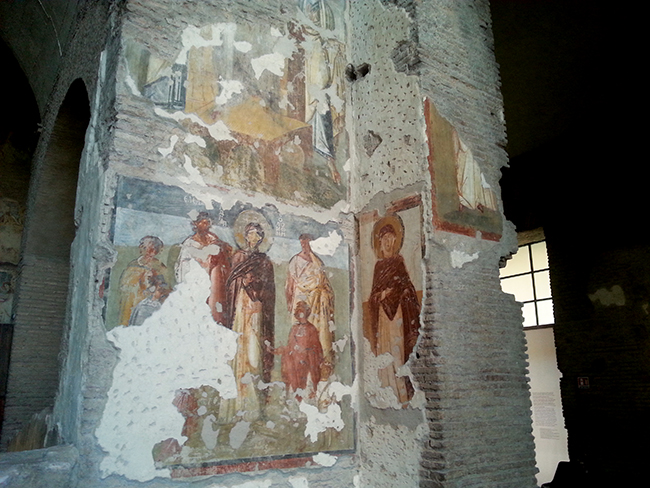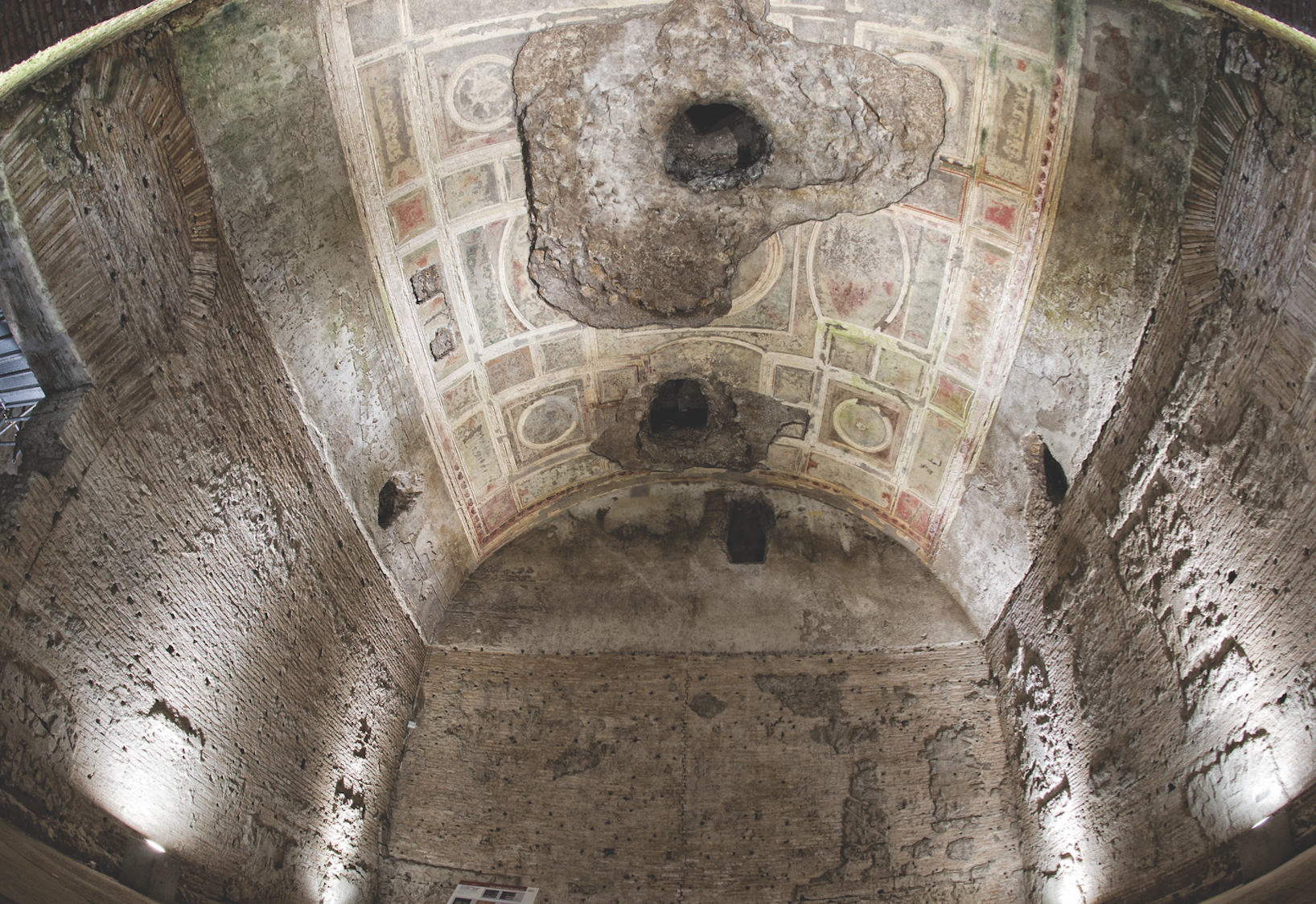Don’t let traffic fumes and tourists get you down in Rome… there’s so much to enjoy in Italy’s vibrant, bustling capital, without bypassing its history and beauty. If you’ve been elbowed out of the way once too often at the main attractions, Lorenza Bacino has some ideas of where to go and what to do slightly off the beaten track…
Santa Maria Antiqua: One of the earliest surviving Christian ruins in Rome

Earlier this year, a little bird told me that Santa Maria Antiqua, the ‘Ancient Church of Saint Mary’, was to re-open to the public after 36 years of painstaking restoration work. I’m glad I heard about it, as the visit to the basilica turned out to be a gorgeous surprise on my recent trip to Rome.
This basilica lies at the foot of the Palatine Hill. The church was adapted from a building dating to the reign of Domitian, in the 1st century AD. Emperors and their entourages used its strategic location – close to the entrance to a large underground passageway – to travel unobserved between their hilltop palaces and the Forum.

An earthquake in the early 9th century seems to have destroyed the building and it lay under a pile of rubble for 1,000 years. The archaeologist Giacomo Boni is credited with rediscovering it in 1900, after a series of earlier excavations and partial discoveries datingback to 1701.
At the time of its rediscovery, it was heralded in the Times as the “Sistine Chapel of the 8th century”. Sadly, however, many of its frescoes were damaged by being exposed to the elements. A roof was finally built in 1910 over the central nave to protect the cycle of Early Byzantine wall paintings. One of the most significant of these is the 6th-century depiction of Santa Maria Regina, the Virgin Mary as a Queen, which is among the oldest known surviving Christian icons in the world.
The church’s former splendour is finally revealed and, through a patchwork of delicately restored frescoes, you’re offered a rare glimpse into the iconography of early Christian art.

The opening multimedia exhibition (which runs until September) uses digital technology at its best to create a journey through time, from ruin to reconstruction, through dissipation to rebirth. Video mapping is used for the first time in the Forum, to recreate the lost detail beneath the surfaces, revealing layers of history and unravelling the story through a series of multimedia wall installations and 3D reconstructions. The project was funded by the Italian government and the World Monuments Fund at a cost of £2 million. And it’s fabulous.
Visiting Santa Maria Antiqua
Opening times are 8.30am-7.15pm, with the doors closing at 6pm. From October onwards it still opens at 8.30am but closes earlier, so do check. Tickets cost €12 (full price) and the same ticket can be used for the Colosseum, Forum and Palatine. It is advisable to book in advance. +39 06 3996 7700 www.coopculture.it
Domus Aurea: Nero’s summer playground, decorated by his own toga-clad painters

Nero’s summer residence, the Domus Aurea, or House of Gold, was a lavish expression of the Emperor’s limitless power, imagination and megalomania – an immense, grandiose stage, a city within a city, complete with woodlands, promenades, a man-made lake for fake battles and, unbelievably, a rotating octagonal dining hall built to reflect the capricious moods of its illustrious resident. The brickwork would have been gilded and covered in brightly coloured marble brought in from Asia Minor and other countries of the Empire in the 1st century AD.
Some of the luxurious detail is still visible. The deep red colour was the most intense and the most expensive. You can still see frescoes on some of the arches. You can also make out perspective in the frescoes, and the styles are reminiscent of what you see at Pompeii. One particular remnant shows the mythical story of Achilles disguised as a woman. Nero also decorated the ceiling with mosaics, which would have come to light in the summer sunshine, creating a magnificent welcome for his numerous guests.
This is a massive and ongoing restoration project, beset by frequent flooding, collapses and subsequent closures.

In Nero’s time, the courtyards of the aristocratic houses that had once stood here were open to views across the Palatine Hill. You’ll need a bit of imagination to reconstruct the scene. Nero wanted to spend more time here, in the place as he had known it as a young man, but it wasn’t to be…
One hot July day in 64 AD, a fire from inside an oil shop took hold. The warm scirocco winds whipped it up and blew it towards the Palatine, wreaking destruction. The blaze raged for days. Not only the aristocratic houses here, but two thirds of the entire city was destroyed. Nero was blamed for the devastation, despite being away at his villa at Antium at the time.
It took Nero four years to build the Domus, between 64-68 AD, but, after his suicide in 68 AD, he became an enemy of the state and the destruction by his successors of his summer residence began. Today, the Nero and Trajan periods co-exist within the 150 rooms that have been excavated, though you can still only visit 250 square metres of the whole complex.
The Domus Aurea was rediscovered in the 15th century. In the upper levels, you can make out graffiti written by the early adventurers and explorers, who were using candles to explore what they initially thought was a large grotto. Renaissance painters including Raphael, Ghirlandaio and Perugino are known to have spelunked down to take a peek and draw inspiration from the frescoes.
Visiting the Domus Aurea
The entrance to the Domus Aurea lies on the Colle Oppio, opposite the Colosseum, and you have to book a guided tour in advance. You’ll need a jumper as it’s cold inside. For information and to make a reservation to visit % +39 06 3996 7700, Monday to Friday from 9am-1pm and 2pm-5pm; Saturday from 9am-2pm, or email info@coopculture.it. Alternatively you can simply book your visit through www.tickitaly.com/tickets/domus-aurea-tickets.php.
